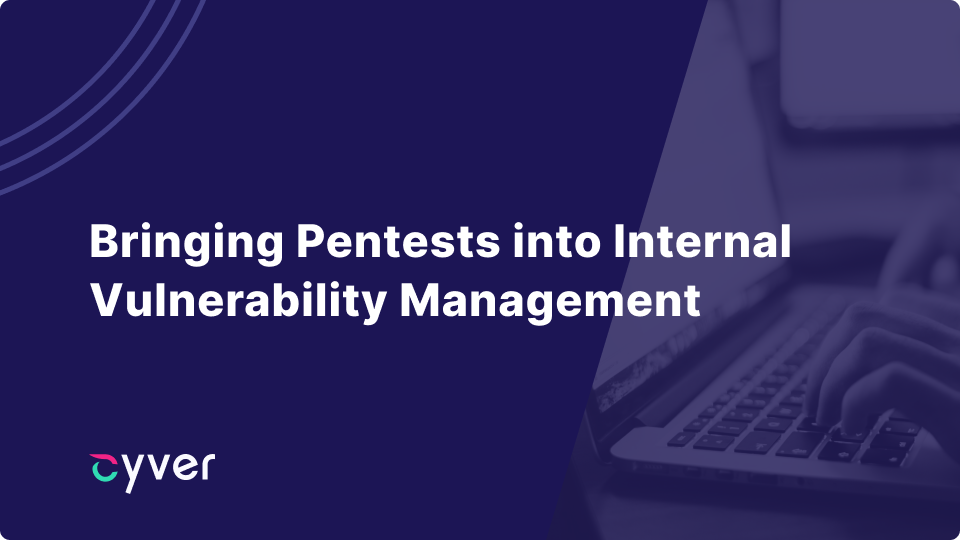Most modern organizations have some form of vulnerability management in place. Systems made up of scanners, automated monitoring, firewalls, and proactive next steps in which vulnerabilities are identified, their root cause found, and fixes worked into upcoming sprints are more and more common.
Pentesting, where you have a third-party organization consisting of ethical hackers, attempt to break through your security in order to find more vulnerabilities is often a separate part of that. This is a natural result of pentesting being a third-party process. Plus, with many organizations leaning on pentesting for compliance rather than ongoing security purposes, it makes sense that it’s easy to delegate as a separate process with separate teams in place to manage it.
At the same time, pentesting can complement your existing internal vulnerability management by adding human insight to the process. Achieving that means choosing pentest delivery models that align with those goals.
Challenges of Bringing Pentesting into Vulnerability Management
In an ideal world, you’d be able to automatically move pentest findings into remediation with your dev teams, often, there are significant challenges to making that happen.
PDF Reports – One of the largest barriers to internalizing pentest results is how they’re delivered. Traditional pentest reports require a person or a team to break those reports down into tickets – and that itself can take time. By the time you’ve moved a pentest report from lengthy PDF to Jira, chances are, your pentest is long over and your vulnerabilities have been open for some time.
Lack of Collaboration – Another very common issue is that pentesters are third party outsiders. Often, pentesters are brought in at the end of a series of sprints, and their only job is to tell developers that their hard work isn’t ready to ship yet. In other cases, they simply report to compliance officers and pentest results might never make it to the dev teams.
No Integrated Process – When vulnerabilities are reported on paper, it’s easy to skip them, easy to fail to assign anyone, and not always easy to figure out next steps. With no defined process in place, vulnerabilities may never move past the report, if they are, you may have no way of tracking whether they’re actually closed, if they’re ever handed to the right people, etc.
Pentest-as-a-Service Integrates into Your Processes
Choosing a pentest partner who offers pentest-as-a-service including finding management can allow you to fully integrate pentesting into internal vulnerability management.
- Pentesting is an ongoing process, developers build relationships with and can communicate with pentesters – ensuring everyone is on the same page and pentesting becomes “part of the process”.
- Stakeholders including compliance officers, IT, and dev teams can log in to access data as it arrives, with vulnerabilities tracked per asset. Plus, with Cyver, you can also assign team leads to your assets, so those people receive notifications when new vulnerabilities impact their assets.
- Vulnerability findings export to Jira, so you can quickly open tickets and assign responsibility inside of the tooling you already use
- Teams can see how long vulnerabilities stay open, and see prioritization data like criticality metrics, making it easier to figure out what to work on and when.
- Teams can track progress, report when findings are fixed, and request retesting to ensure the problem is actually resolved
- Teams can share dashboards showing time-to-fix, where vulnerabilities occur, types of vulnerabilities, vulnerability criticality, and other data to non-technical stakeholders to gain buy-in, set budgets, and share insights.
- Teams can see when findings re-occur, either in the same asset or in new ones, for better long-term vulnerability tracking
Essentially, with Cyver, your pentest partner delivers data that teams can immediately integrate into daily work, add to existing vulnerability management systems by importing tickets, and can track just like vulnerabilities from scanners and other tools.
If you’d like to know more, contact us for a demo or talk about how Cyver can help your organization improve its cybersecurity.
